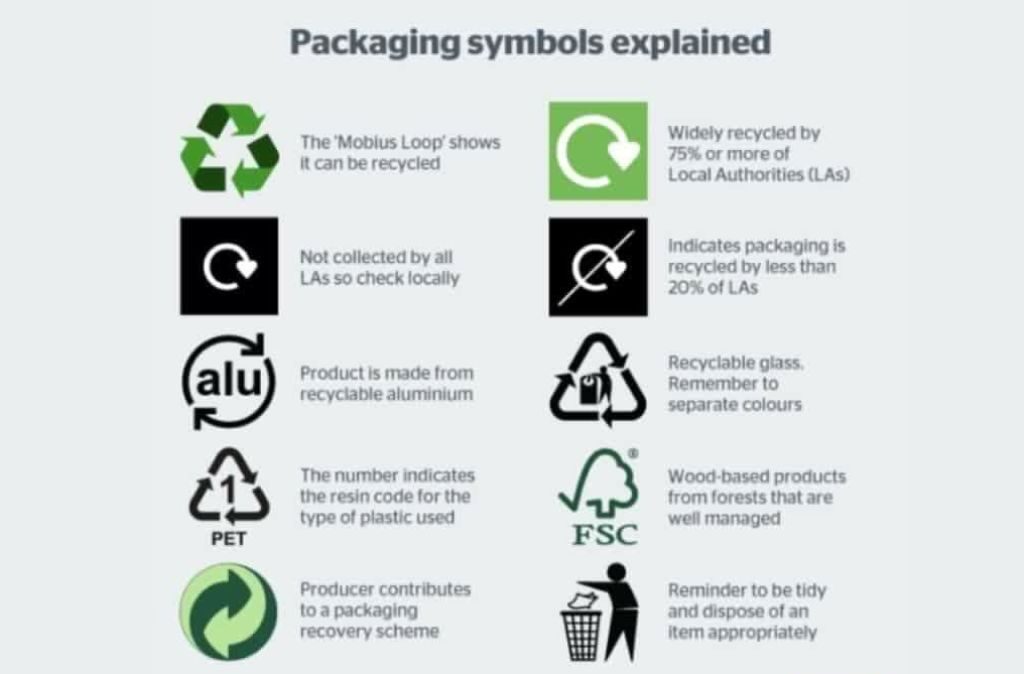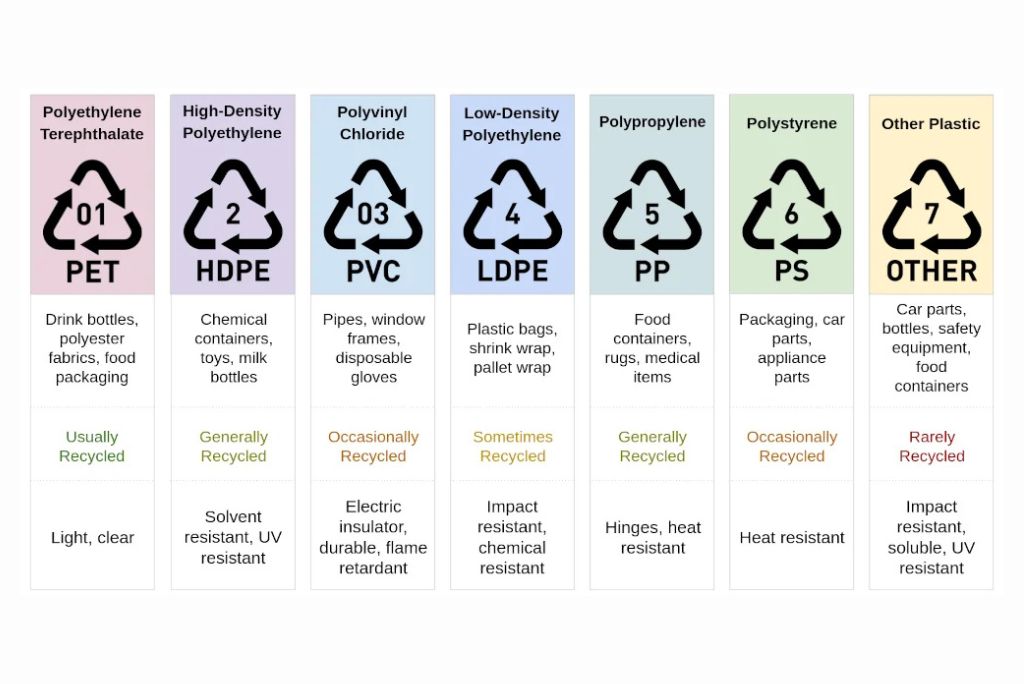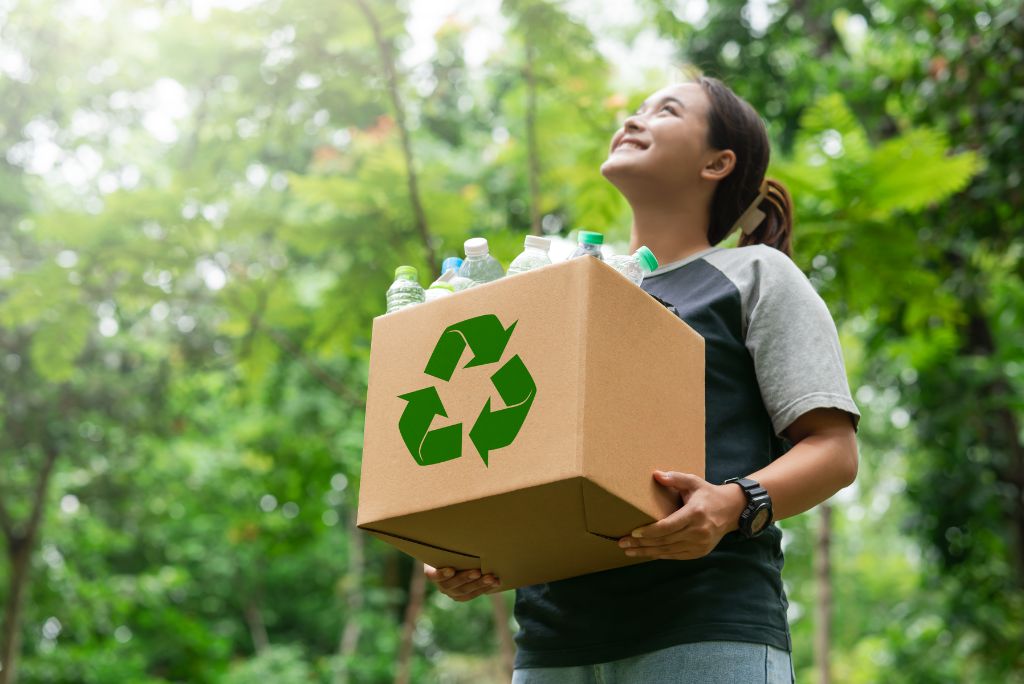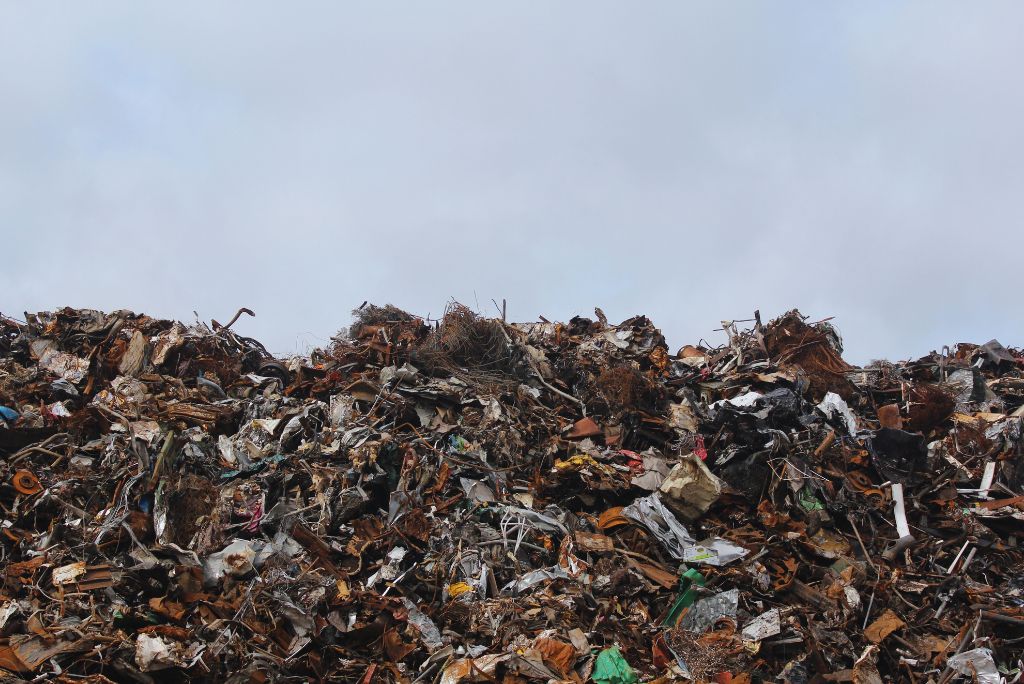Understanding Recycling Symbols: Guide for Smarter Waste Management
Recycling symbols are everywhere—on plastic bottles, cardboard boxes, and even electronic gadgets—but understanding these symbols can be the key to reducing waste and building a sustainable future.
While most people encounter them daily, few know their origins, meanings, and how they contribute to effective recycling.
Let’s dive deep into the world of recycling symbols, their significance, and how they can help you make environmentally conscious decisions.
What Are Recycling Symbols?
Recycling symbols are more than just logos; they are a universal language designed to guide consumers on properly disposing of materials.
The most recognizable is the Mobius Loop—three chasing arrows forming a triangle, first introduced in 1970 during the inaugural Earth Day celebration.
According to EPA.gov, this symbol originally signified products made from recycled materials but has since evolved to indicate recyclability in general.
However, not all recycling symbols are created equal. Some offer straightforward instructions, while others require more profound knowledge.
For example, the resin identification codes on plastics often confuse even diligent recyclers.
Understanding these symbols is crucial because incorrect recycling can contaminate entire batches of recyclable materials, sending them to landfills instead.
Decoding the On-Pack Recycling Label (OPRL)

The On-Pack Recycling Label (OPRL) is a standardized system primarily used in the UK but gaining traction globally.
This labeling system provides straightforward, actionable instructions for consumers, often simplifying complex recycling guidelines.
Common Labels and Their Meanings
- Widely Recycled: This label indicates that over 75% of local recycling programs accept the material, making it a straightforward choice for consumers aiming to recycle correctly.
- Check Locally: This prompts consumers to verify whether their local recycling facilities can process the item. Materials with this label often face logistical or technological challenges, as not all facilities are equipped to handle them.
- Not Yet Recycled: Items with this label are currently unsuitable for standard recycling processes due to lack of infrastructure, technology, or economic feasibility.
Products marked with the “Check Locally” label often require specialized facilities, which are unavailable in every region.
For example, black plastic trays pose significant recycling challenges because their dark color makes them difficult for sorting machines to detect.
This limitation highlights the importance of local recycling capabilities and the need for ongoing innovation in recycling technologies.
By adopting these simplified labels, countries and organizations aim to demystify recycling and increase participation rates, ultimately driving a global push towards a more sustainable future.
Understanding the Plastic Resin Codes (Recycling Symbols 1–7)
 Plastic items often display a number inside the familiar Mobius Loop, representing one of seven different types of plastic resins.
Plastic items often display a number inside the familiar Mobius Loop, representing one of seven different types of plastic resins.
These numbers play a critical role in helping recycling facilities sort and process plastics efficiently, reducing contamination and improving recycling outcomes.
Here’s a closer look at what each number means and how it affects recyclability.
Breaking Down the Numbers
#1 (PET - Polyethylene Terephthalate)
- Common Uses: Water bottles, soda bottles, and food containers.
- PET is one of the most recyclable plastics. It’s lightweight, clear, and widely accepted by recycling programs. However, it has limitations, as it can only be recycled into similar items a finite number of times due to degradation in quality during the recycling process.
#2 (HDPE - High-Density Polyethylene)
- Common Uses: Milk jugs, detergent bottles, and shampoo containers.
- HDPE is valued for its strength and durability. It’s also highly recyclable, making it a popular choice for manufacturers aiming to produce sustainable products. Items made from recycled HDPE include pipes, plastic lumber, and more bottles.
#3 (PVC - Polyvinyl Chloride)
- Common Uses: Plumbing pipes, vinyl flooring, and some food wraps.
- PVC is challenging to recycle due to its chemical makeup, which can release harmful substances during processing. Specialized facilities can handle it, but such options are limited, making PVC one of the least recyclable plastics.
#4 (LDPE - Low-Density Polyethylene)
- Common Uses: Grocery bags, shrink wrap, and squeezable bottles.
- Although LDPE can technically be recycled, many facilities do not accept it because it’s lightweight and prone to contamination. Efforts are underway to improve LDPE recycling, particularly for applications like producing composite lumber.
#5 (PP - Polypropylene)
- Common Uses: Yogurt containers, bottle caps, straws, and medicine bottles.
- Polypropylene’s recycling rate is gradually increasing as new technologies emerge. However, it still faces barriers due to its varied uses and the difficulty of collecting clean, uncontaminated PP materials.
#6 (PS - Polystyrene)
- Common Uses: Yogurt containers, bottle caps, straws, and medicine bottles.
- Polystyrene is one of the least recycled plastics. It breaks easily into microplastics, posing environmental risks. While recycling programs for PS exist, they are few, and the material is often excluded from curbside collections.
#7 (Other)
- Common Uses: A diverse category that includes polycarbonate, bioplastics, and mixed plastics used in items like electronics, large water bottles, and compostable plastics.
- This catch-all category includes materials that are hard to classify and recycle. Some #7 plastics, like bioplastics, are compostable under specific conditions, but others require advanced recycling methods, making them challenging to process on a large scale.
Exploring Other Recycling Symbols
Beyond plastics, recycling symbols apply to glass, aluminum, and electronics. Each symbol carries unique instructions.
Glass Recycling Symbols
A simple broken bottle icon indicates that the material is recyclable, but only when free of contaminants like ceramics or lids.
Aluminum Recycling Symbols
Aluminum cans often bear the Mobius Loop along with a reminder of its infinite recyclability.
According to Aluminum.org, recycling aluminum saves 95% of the energy required to produce it from raw materials.
Compostable Symbols
Compostable items carry symbols like a leaf or plant. These items break down into organic material under specific conditions but should not be confused with biodegradable items, which may still leave microplastics behind.
Electronic Waste Symbols
A crossed-out wheeled bin warns that electronic items require specialized recycling. E-waste contains hazardous materials like mercury but also valuable metals like gold and copper.
Why Is Recycling Important?
Recycling is not just a moral responsibility; it has tangible benefits for the environment, economy, and society.
Environmental Impact
Recycling reduces the need for raw material extraction, conserving resources and preventing habitat destruction.
It also minimizes greenhouse gas emissions by lowering energy use in production processes.
Economic Benefits
The recycling industry generates millions of jobs globally. In the U.S. alone, it supports over 1.1 million jobs, as per a study by ISRI.
Social Responsibility
Encouraging recycling promotes community engagement and accountability, fostering a collective effort toward sustainability.
Best Practices for Recycling at Home
Should You Clean an Item Before Recycling It?
Yes, but only lightly. Rinsing containers to remove food residue prevents contamination, which can render entire batches of recyclables unusable.
However, avoid using excessive water—strike a balance to save resources.
Avoiding Contamination
Common contaminants include greasy pizza boxes and broken glass. Separate non-recyclables to avoid "wish-cycling," which creates inefficiencies.
Sorting Tips
- Keep paper and cardboard dry.
- Crush cans and bottles to save space.
- Avoid placing items in plastic bags unless explicitly required by your recycling program.
Conclusion
Recycling symbols serve as a bridge between consumers and sustainable practices, but their complexity can be overwhelming.
By decoding these symbols and adopting best practices, we can collectively reduce waste and support a circular economy.
Take a moment to examine the packaging around you and reflect on its lifecycle.
With a little effort and awareness, you can ensure that your recycling habits make a lasting impact.
For businesses and organizations looking to revolutionize their waste management processes, BurCell offers innovative solutions designed to optimize recycling and resource recovery.
Contact BurCell today to explore how our cutting-edge waste management solutions can help you succeed in creating a sustainable future.
Together, we can transform waste systems into a cornerstone of environmental preservation.
FAQs
What are the most common recycling symbols and what do they mean?
The most common recycling symbols include the Mobius Loop, resin identification codes (numbers 1-7 in triangles), and chasing arrows with percentages. The Mobius Loop generally indicates the item can be recycled, while resin codes specify the type of plastic. Chasing arrows with percentages show the material's recycled content.
How do I know if an item is actually recyclable in my area?
Local recycling programs have specific guidelines. Check your city or county's waste management website or contact them directly. Some materials may be accepted curbside, while others require drop-off at designated centers. Always rinse and clean containers before recycling.
What are the common misconceptions about recycling?
Many people mistakenly believe that all plastics with the recycling symbol are recyclable. However, the symbol only indicates the type of plastic, not its recyclability in your area. Additionally, contamination (food residue, liquids) can make items unrecyclable.
How can I reduce my waste and improve my recycling habits?
Reduce consumption by choosing reusable alternatives (bags, bottles, containers). Avoid single-use items whenever possible. Compost food scraps and yard waste. Learn about your local recycling guidelines and participate actively in community recycling programs.
Why is it important to understand recycling symbols and practice proper waste management?
Proper recycling conserves natural resources, reduces landfill waste, and minimizes environmental pollution. Understanding recycling symbols helps you make informed decisions about how to dispose of your waste, maximizing recycling efforts and contributing to a more sustainable future.
Top Waste Disposal in Community Methods: What Works & Why They Matter
Effective waste disposal in community settings has become a pressing issue as urban populations grow and environmental concerns mount.
Traditional waste management systems, while functional, often fall short of addressing the complexities of modern waste streams and sustainability goals.
This article explores innovative waste disposal methods transforming communities and examines what makes them effective.
The Challenges of Traditional Waste Disposal Methods
Traditional waste disposal methods, such as landfilling and basic recycling, have been the backbone of community waste management for decades.
However, these systems face significant challenges. Landfills are reaching capacity, and the environmental impact of methane emissions from decomposing waste is a major concern.
Recycling rates vary widely, and contamination in recycling streams can undermine the effectiveness of these programs.
The economic implications of traditional waste management are also significant. Communities bear the burden of rising disposal costs, and the linear waste economy – where resources are used once and then discarded – is inherently unsustainable.
Addressing these challenges requires innovative approaches that enhance efficiency, reduce environmental impact, and foster a circular economy.
Emerging Trends in Community Waste Disposal
A need for sustainability and efficiency drives modern waste disposal innovations.
Key trends include adopting smart technologies, decentralized waste management systems, and a strong focus on sustainability.
These trends reflect a shift from reactive to proactive waste management, emphasizing waste generation reduction and resource recovery maximization.
- Smart Technologies: Integrating Internet of Things (IoT) devices and artificial intelligence (AI) into waste management systems allows for real-time monitoring and optimization of waste collection routes. This reduces operational costs and minimizes the environmental footprint of waste transportation.
- Decentralized Systems: Decentralization involves managing waste closer to its source. This can mean local composting facilities, community recycling centers, or small-scale waste-to-energy plants. Decentralized systems reduce the need for long-distance waste transport and increase community engagement in waste management practices.
- Sustainability Focus: Modern waste disposal methods prioritize sustainability. This includes reducing waste generation through better product design, increasing recycling and composting rates, and recovering energy from waste that cannot be recycled. Sustainable waste management practices aim to create a circular economy where materials are continuously reused and recycled.
Detailed Examination of Innovative Waste Disposal Methods
1. Smart Waste Management Systems
Smart waste management systems utilize IoT and AI to enhance waste collection and processing efficiency and effectiveness.
Sensors in waste bins can monitor fill levels and communicate with waste collection services to optimize collection schedules.
AI algorithms analyze data to predict waste generation patterns and optimize collection routes, reducing fuel consumption and emissions.
The city of Barcelona has implemented a smart waste management system that uses sensors in waste bins to monitor fill levels.
The system has reduced waste collection costs by 10% and decreased carbon emissions from waste collection trucks by 20%.
2. Waste-to-Energy (WtE) Technologies
Waste-to-energy (WtE) technologies convert non-recyclable waste into energy through incineration, gasification, and pyrolysis.
These technologies reduce the volume of waste sent to landfills and generate electricity and heat, contributing to energy security.
WtE technologies offer a dual benefit: waste reduction and energy production.
However, they can be controversial due to concerns about air pollution and the potential for toxic by-products. Advanced WtE facilities incorporate stringent emissions controls to mitigate these risks.
3. Community-Based Recycling Initiatives
Local recycling programs are crucial in effective waste disposal in community settings.
Community-based initiatives often involve education campaigns, convenient recycling drop-off points, and incentives for participation.
Successful programs rely on community engagement and awareness.
The town of Kamikatsu in Japan has implemented a zero-waste program where residents separate their waste into 45 different categories for recycling.
The community's recycling rate has reached over 80%, significantly reducing waste sent to landfills.
4. Composting and Organic Waste Management
Composting effectively manages organic waste, turning food scraps and yard waste into valuable compost for gardens and farms.
Community composting programs encourage residents to compost their organic waste locally, reducing landfill use and producing nutrient-rich soil amendments.
Effective composting requires a balance of green (nitrogen-rich) and brown (carbon-rich) materials, adequate aeration, and moisture management.
Community composting programs often provide bins, education, and support to residents.
Cities like San Francisco have implemented mandatory composting programs, diverting significant organic waste from landfills.
The compost produced is used in local parks and gardens, supporting urban agriculture and green spaces.
5. Advanced Sorting and Recycling Technologies
Modern sorting technologies use robotics and AI to improve the efficiency and accuracy of recycling processes.
These systems can identify and sort materials with high precision, reducing contamination and increasing the recovery rates of valuable materials.
Automated sorting systems equipped with AI can recognize different types of plastics, metals, and paper, sorting them at high speeds.
This reduces labor costs and improves the purity of recycled materials.
The Material Recovery Facility (MRF) in San Jose, California, uses AI-powered robots to sort recyclables.
This facility has achieved a recycling rate of over 80%, demonstrating the potential of advanced sorting technologies.
6. BurCell® System: A Game-Changer in Waste Processing
The BurCell® System represents a significant advancement in waste processing technology.
This system enhances the digestibility of the organic fraction of Municipal Solid Waste (MSW), maximizing the purity and recovery of organics and producing a more homogenous feedstock for anaerobic digesters.
The BurCell® System offers several benefits, including increased biogas production, improved gas generation performance, and the recovery of mixed plastics and other high BTU materials for thermal conversion.
Its modular design reduces operational costs compared to traditional processing centers .
Environmental and Economic Benefits of Innovative Waste Disposal
Innovative waste disposal methods offer significant environmental and economic benefits.
By reducing the volume of waste sent to landfills, these methods help lower greenhouse gas emissions and minimize environmental pollution.
Improved recycling and composting rates conserve natural resources and reduce the need for virgin materials.
Economically, innovative waste disposal can lead to cost savings for communities.
Efficient waste collection and processing reduce operational costs, while energy recovery from waste can provide a source of revenue.
Additionally, creating a circular economy through recycling and composting generates economic opportunities and supports local industries.
Challenges and Considerations for Implementation
Despite the clear benefits, implementing innovative waste disposal methods can present challenges.
Initial investment costs for advanced technologies can be high, and communities may face resistance to change.
Education and awareness campaigns are crucial to gaining public support and ensuring participation in new waste management programs.
Policy support and funding are also critical. Governments play a key role in providing the regulatory framework and financial incentives needed to promote innovative waste disposal methods.
Collaborative efforts between public and private sectors can drive the development and adoption of new technologies.
Conclusion
Innovative waste disposal methods are essential for addressing the challenges of traditional waste management systems and achieving sustainability goals.
By leveraging smart technologies, community engagement, and advanced processing systems like the BurCell® System, communities can enhance their waste management practices, reduce environmental impact, and create economic opportunities.
The success stories of cities like San Francisco, Kamikatsu, and Copenhagen demonstrate the potential of innovative waste disposal methods to transform communities.
As these methods continue to evolve and new technologies emerge, the future of waste disposal in community settings looks promising, with the potential to create a cleaner, more sustainable world.
To see how BurCell Technologies can help you succeed with sustainable waste solutions, contact us today.
Let's work together to implement innovative systems that will benefit your community and the environment.
FAQs
What are the most effective innovative waste disposal methods currently in use?
The most effective methods include waste-to-energy technologies, advanced recycling processes like chemical recycling, and community-driven composting initiatives. These methods reduce landfill dependency and promote sustainability by converting waste into usable resources.
How do waste-to-energy technologies benefit communities?
Waste-to-energy technologies convert non-recyclable waste into electricity or heat, significantly reducing landfill use and providing renewable energy sources for communities. This method also minimizes greenhouse gas emissions compared to traditional waste disposal.
Why is community-driven composting important for waste management?
Community composting programs turn organic waste into valuable compost, which can be used to enrich local soils. This method not only reduces waste but also supports local agriculture and green spaces, promoting a circular economy.
How does chemical recycling differ from traditional recycling?
Chemical recycling breaks down plastics into their original components, allowing them to be reused in new products. Unlike traditional recycling, which often downgrades the material quality, chemical recycling can handle more types of plastics and create high-quality outputs.
What role do local governments play in promoting innovative waste disposal methods?
Local governments play a crucial role by implementing policies that encourage or mandate the adoption of innovative waste disposal methods. They can provide funding, education, and infrastructure to support these initiatives, ensuring long-term success and community engagement.



